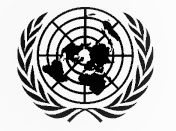This year’s Asia-Pacific Forum for Sustainable Development, an annual, inclusive intergovernmental forum to support follow-up and review of progress on the 2030 Agenda for Sustainable Development and the Sustainable Development Goals (SDGs), focused on a specific set of Goals, including Goal 16. SDG 16 provides the framework for peace, justice for all, and strong institutions, which are fundamental for accelerating progress of other SDGs and leaving no one behind. However, the limited availability of data undermines tracking progress toward this goal.
As stakeholders gathered in Bangkok, the UN Regional Centre for Peace and Disarmament in Asia and the Pacific (UNRCPD) and the UN Office on Drugs and Crime (UNODC) organized a virtual discussion on the role data for tracking progress on SDG Target 16.4, which aims to significantly reduce illicit financial and arms flows, strengthen the recovery and return of stolen assets and combat all forms of organized crime. As the co-custodians for indicator 16.4.2[1], UNRCPD and UNODC showcased a range of practical tools, frameworks, and programmes that can help to assist Member States in combatting illicit arms flows and improve data collection on illicit firearms and organized crime. During the online workshop, participants had the opportunity to exchange insights, share on-going initiatives in the region, and reflect on progress, ongoing challenges, and measurability to enhance efforts towards achieving SDG 16.4.
Mr. Deepayan Basu Ray, Director of UNRCPD introduced UNODA’s and UNRCPD’s mandate and portfolio. He focused on the role of the Centre in promoting and strengthening certain normative frameworks, including the UN Programme of Action to Prevent, Combat, and Eradicate the Illicit Trade in Small Arms and Light Weapons in All Its Aspects (UN PoA) and its corresponding International Tracing Instrument (ITI), stressing their importance for monitoring and evaluating SDG 16.4.2. He reflected on the commitment of States to submit voluntary national reports on the implementation of the PoA to the United Nations every two years[2]. These reports serve as the primary tool for assessing the Programme of Action’s effectiveness, with a reporting template designed to facilitate the logging of detailed information on weapons collected and measures implemented. States have agreed to utilize PoA national reporting to support data collection for relevant indicators, particularly SDG indicator 16.4.2.

Focusing on the topic of strengthening normative frameworks, Ms. Simonetta Grassi, Chief of Firearms Trafficking Section at UNODC presented UNODC’s mandate on the implementation of the United Nations Convention against Transnational Organized Crime (UNTOC) and its Firearms Protocol. Ms. Grassi highlighted the critical role of these international instruments in combating transnational organized crime and illicit manufacturing of and firearms trafficking. Through her presentation, Ms. Grassi underscored the significance of a coordinated approach involving legislative policies, international cooperation, capacity-building initiatives, preventive measures and monitoring and evaluation in enhancing the implementation of these normative frameworks.

Next, Mr. Alistair Gee, Executive Director of Centre for Armed Violence Reduction (CAVR) elaborated on the importance of robust data collection methodologies to effectively measure progress towards SDG 16.4, particularly in addressing illicit arms flows and armed violence. He highlighted the significance of community reporting as a tool for enabling information gathering and seizing illicit firearms. Mr. Gee also focused on gun amnesties as an important tool for reducing the availability and misuse of firearms. Mr. Gee presented tools such as the CAVR’s Arms Tracker and the Armed Incidents Management (AIM) to enhance data collection and reporting on arms record-keeping, trafficking and violent incidents.

Ms. Sara Pinheiro Stocker, Crime Prevention and Criminal Justice Officer at UNODC presented an overview of the United Nations International Firearms and Ammunition Control Questionnaire (UN-IAFQ), which is a comprehensive data collection mechanism to enhance the understanding and analysis of firearms trafficking and related trends in support of efforts to combat transnational organized crime and illicit firearms flows.

Mr. Felipe De La Torre, Regional Coordinator, Border Management Programme at UNODC Regional Office for Southeast Asia and the Pacific presented UNODC’s programme on Border Management, drawing attention to the successful experience of the ASEAN Border Management Cooperation Roadmap. Mr. De La Torre highlighted the significance of the roadmap as a strategic framework for fostering collaboration among ASEAN member states to enhance border security, data collection and reporting mechanisms, strengthen law enforcement capacities, and promote information sharing and capacity building.

For further information, please contact Ms. Ida Scarpino, Political Affairs Officer at the United Nations Regional Centre for Peace and Disarmament in Asia and the Pacific at ida.scarpino@un.org.
[1] Proportion of seized, found or surrendered arms whose illicit origin or context has been traced or established by a competent authority in line with international instruments”.
[2] https://smallarms.un-arm.org/

